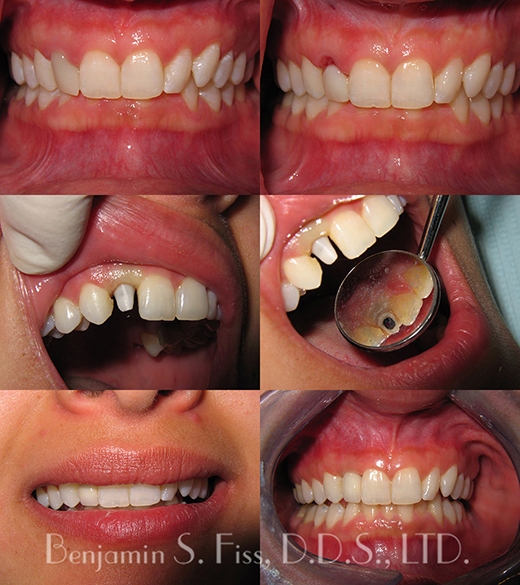The smart Trick of Dental Sense That Nobody is Discussing
The smart Trick of Dental Sense That Nobody is Discussing
Blog Article
Get This Report about Dental Sense
Table of ContentsThe smart Trick of Dental Sense That Nobody is Talking AboutMore About Dental SenseAll About Dental SenseDental Sense for Dummies
are clinical tools operatively implanted into the jaw to recover an individual's ability to chew or their appearance. They provide support for artificial (fake) teeth, such as crowns, bridges, or dentures. When a tooth is lost because of injury or condition, a person can experience problems such as fast bone loss, defective speech, or adjustments to eating patterns that cause pain.Oral implant systems include an oral implant body and dental implant joint and may also include an abutment addiction screw. Root canal procedure. The oral implant body is operatively placed in the jawbone in place of the tooth's root. The dental implant abutment is normally affixed to the dental implant body by the joint addiction screw and extends via gums into the mouth to sustain the affixed fabricated teeth
(https://disqus.com/by/dentalsense1/about/)Structure of The Dental Implant System selecting oral implants, talk to your oral service provider about the possible advantages and risks, and whether you are a candidate for the procedure. Things to consider: Your overall wellness is an essential element in figuring out whether you are a good candidate for oral implants, for how long it will certainly take to heal, and how much time the implant may stay in place.
Smoking may influence the healing process and lower the long-lasting success of the implant. The healing procedure for the implant body may take several months or longer, throughout which time you generally have a short-lived abutment in place of the tooth. the dental implant treatment: Meticulously comply with the dental hygiene instructions provided to you by your oral company.
Things about Dental Sense
Implant failing can lead to the requirement for one more operation to take care of or replace the dental implant system. Brings back the capacity to chew Restores cosmetic look Helps keep the jawbone from diminishing because of bone loss Protects the health and wellness of the surrounding bone and gum tissues Aids keep surrounding (nearby) teeth steady Boosts high quality of life Damages to bordering all-natural teeth throughout implant placement Injury to the surrounding cells throughout surgery, such as sinus opening Injury during surgery (for example, fracture of bordering jawbone) Inadequate function, such as feeling like the teeth do not bite together normally A feeling that the tooth is loosened or turning in position resulting from a joint screw loosening Implant body failing (looseness of the implant body) due to systemic infection, which might be more probable in clients with unchecked diabetes mellitus because of local infection in bone and gums supporting the dental implant body as a result of delayed healing, which may be more probable in clients who smoke Problem cleaning up the periodontals around the implant, leading to bad oral hygiene Neglected periodontal illness Post-surgical tingling due to nerve impingement or damage Constantly inform health and wellness care providers and imaging technicians that you have oral implants prior to any magnetic resonance imaging (MRI) or x-ray treatments.
FDA is not familiar with any adverse events reported for MRI or x-ray treatments with oral implants. Dental implants systems are usually made of materials that adhere to worldwide consensus standards of the International Company for Standardization (ISO) or ASTM International. These requirements have information of what makes a safe investigate this site material.

An oral implant is a structure that replaces a missing out on tooth. With screw-like tools, the surgeon inserts an implant into the jawbone, and it serves as an anchor for a synthetic tooth, called a crown. A device called an abutment links the artificial tooth to the oral implant. The crown is tailor-made to fit the individual's mouth and match the shade of their teeth.
How Dental Sense can Save You Time, Stress, and Money.
Some people are not qualified for oral implant surgery. It is for dental doctors to run on people with: acute illnessuncontrollable metabolic diseasebone or soft cells condition or infectionIf these problems are fixed, a person can have the surgical treatment. In, oral doctors avoid operating on people with: If people with any one of the above undertake oral implant surgery, there is a greater risk of the implant stopping working.

Oral dental implant surgical procedure is a tailored process. It's not the very same for everybody. The adhering to offers a general overview of what you can anticipate your dentist, oral specialist, periodontist or prosthodontist to do: Place the dental implant operatively. Offer you time to heal. Attach the post and last crown, bridge or denture.
Next, your cosmetic surgeon will carefully put the dental implant into your jaw. If your dental implant is near the front of your mouth, your dentist will make a temporary tooth for you to wear till you recover.
Some Known Details About Dental Sense
Your company can inform you what to anticipate in your circumstance. Throughout the healing phase, your jawbone should fuse to the oral implant. This procedure, called osseointegration, is essential for security and long-term success. This process can take anywhere from three to nine months. Sometimes, it may take longer.
As soon as your dental implant heals, your dental practitioner can affix the joint (tiny adapter message) and your final repair (crown, bridge or denture). This typically takes concerning one hour to complete and might call for a 2nd minor surgical treatment. You should not feel any type of pain throughout your oral implant treatment because your supplier will utilize drug to numb your periodontals.
Report this page